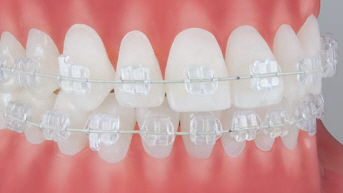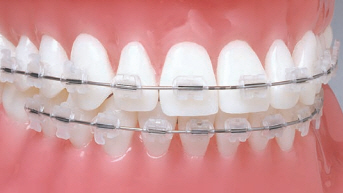“I wish I did this sooner!”
Adult patients usually don’t understand the value of orthodontics until they see the results. They may initially think they are too old for orthodontics until they realize what not doing orthodontics would mean and that bone physiology is the same in adults and children. Orthodontics helps create the vertical space needed to restore teeth that suffer from heavy wear, the horizontal space needed to place dental implants after spaces have started closing due to missing teeth, and the broad arches that help provide that beautiful wide smile we all desire.
Since Dr. Jackson designs and plans cases with the end in mind, she places the teeth in the ideal position to achieve the ideal restorative outcome. Forgoing orthodontics on many comprehensive cases result in compromised results or limited options. Orthodontics prior to restoring teeth is similar to shoring a home prior to renovation. Putting teeth where they belong is simply better than restoring teeth that are in the incorrect position. Many times less invasive procedures can be performed which is better for the teeth and surrounding tissues as well as better for the patient. We’ve never heard a patient say that they would have preferred to just “split the difference” on the spacing or “overprep” a tooth that is not in a good position.
Dr. Jackson always offers the same type of treatment to her patients that she offers to her own family or that she would want for herself.
What is orthodontics?
Orthodontics is a sub-specialty of dentistry that is devoted to the study and treatment of malocclusions (improper bites). Improper bites may result from tooth irregularity or positioning, disproportionate jaw relationships, or both. The word orthodontics is derived from the Greek language (ortho) meaning straight and (odont) meaning tooth. Today, orthodontics means tooth movement and possibly much more…
With the high quality of continuing education and training that Dr. Jackson has received from the American Orthodontic Society, she can provide a wide spectrum of orthodontic services to your family. Her patients trust her to address all aspects of their dental health, and that trust now extends to orthodontia for a growing number of her families.
Orthodontic treatment may focus on improving poor positioning of teeth and bite relations or, may even influence the way the face shapes and forms over time. Orthodontic treatment can be carried out for purely cosmetic reasons, improving the general appearance of a person’s teeth and face. In addition, treatment may be necessary to functionally improve the bite (occlusion). Often both goals can be accomplished simultaneously.
One of the most important and fundamental considerations in smile design is the position of the teeth themselves; how do they actually fit into the framework of the face and jaws and how do the upper and lower jaws relate to each other. By analogy, before renovating or building a house it is important to consider whether the foundation is not only sound, but in the right position.
How does orthodontic treatment work?



How can orthodontic treatment help me?
Enjoy smiling again
If you’ve ever held your hand over your mouth when you smile, you can appreciate the benefit of being able to smile with confidence. Through orthodontics, you can stop hiding your smile! Family photos, relaxing with friends, career opportunities and stress reduction – your smile plays a major role in all these important areas of life.
Breathe better
Believe it or not, orthodontics is often able to help patients breathe better by opening constrained airways!
Make room for restoring your worn and missing teeth
To avoid aesthetic compromises and weak restorations, orthodontics can give Dr. Jackson the necessary room to design your ideal smile.
Longer lasting teeth
Prevents premature tooth wear!
Improved function
Restore your ability to eat certain foods! Expand collapsed arch!



